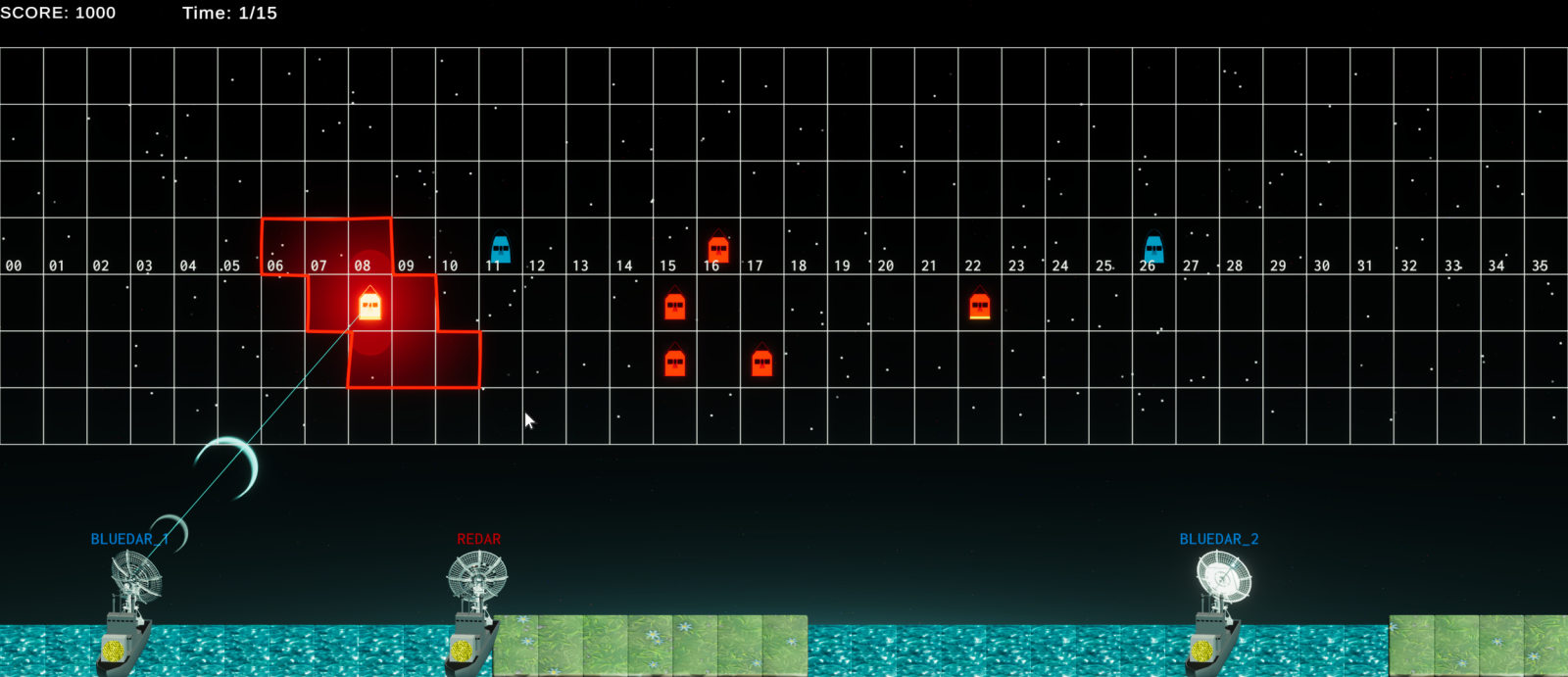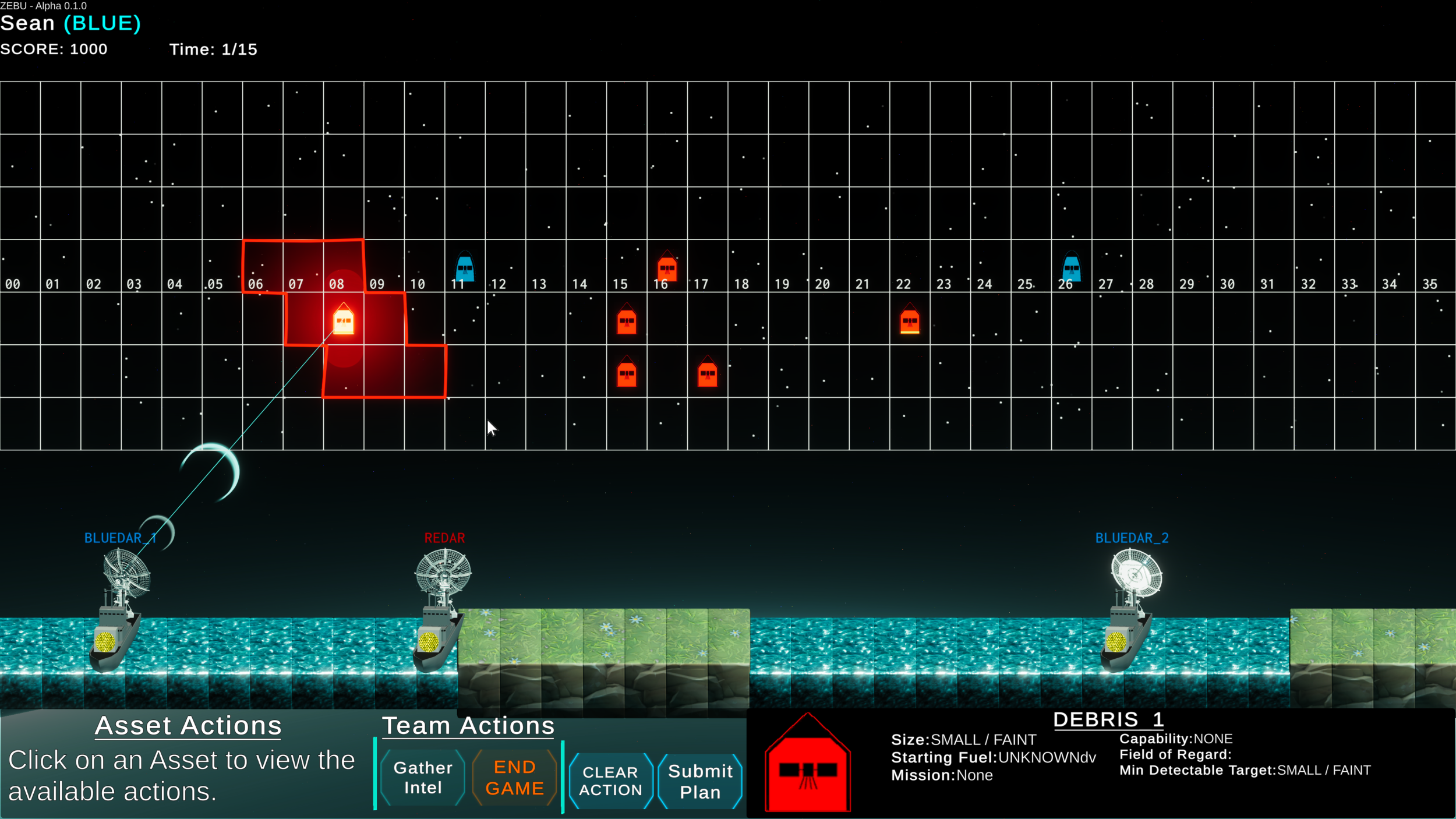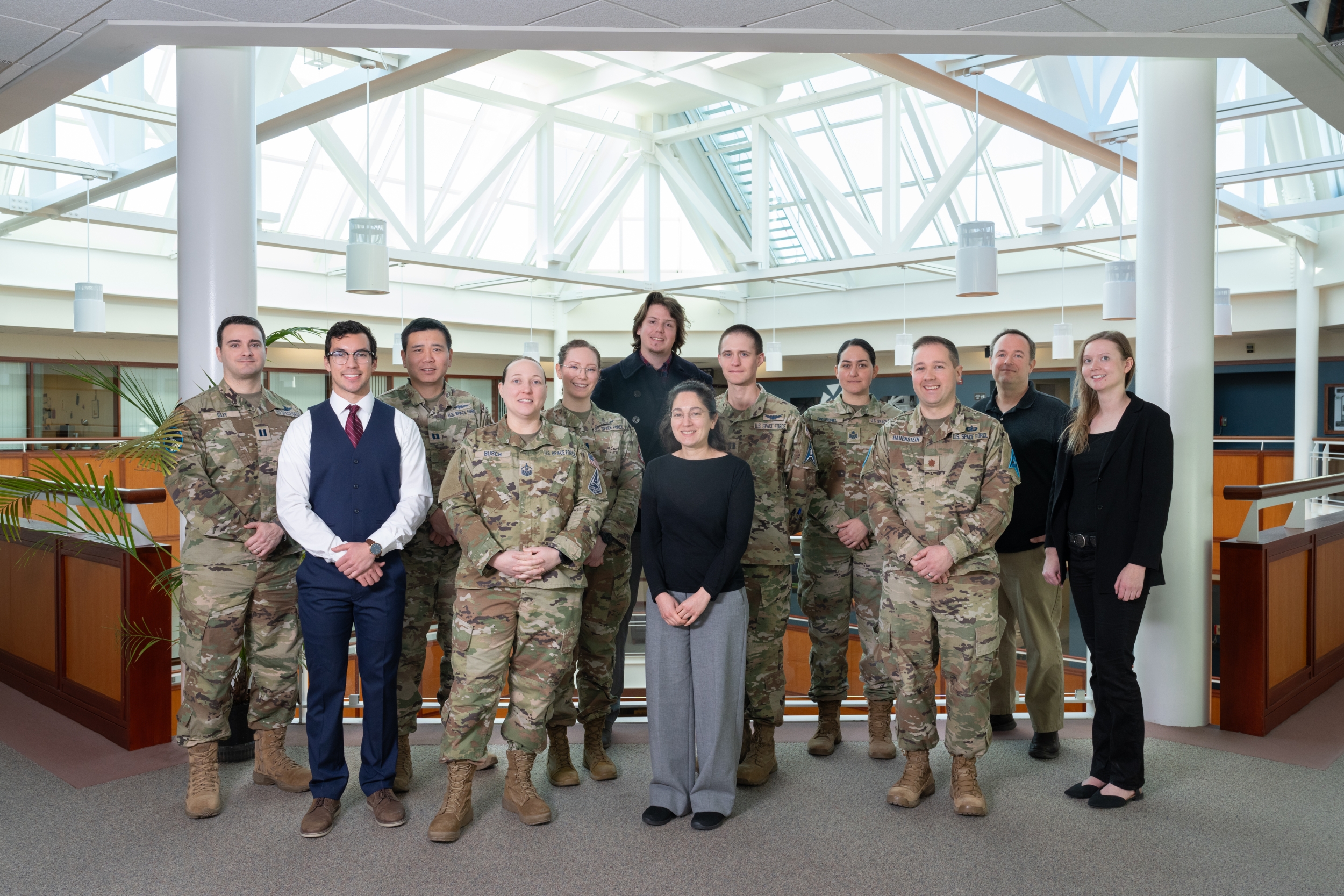
Military interns test new serious game for deterring conflict in space
As the space domain becomes increasingly crowded with satellites launched for military, scientific, and civilian purposes, maintaining awareness of spacecraft activity is essential for the United States to deter conflict with other nations. Mistaking benign activity for a threat, or vice versa, could escalate tensions or leave dangerous activity unchecked. Military personnel have a variety of resources, such as ground radars and orbiting satellites, they can use to monitor activity and then make decisions on how to respond to what they discover. These resources are limited, can be costly, and can take focus away from other essential tasks. Therefore, personnel must maintain awareness without overtaxing available resources.
A team from the Laboratory's Space Systems and Technology Division developed a serious game that helps train military personnel in awareness and decision making in space. The game models the U.S. space domain and tasks players to discover what an opponent's satellites are doing and to react accordingly. The game builds on the Laboratory's history of serious games developed for military applications.
"Our goal is for players to understand the decision processes behind deterrence and escalation with near-peer adversaries in space, especially how fog of war — the uncertainty of situations — can confuse our understanding," says Kallai Hokanson, who is the project team lead. "We also want to teach players to try out what-if scenarios to ensure that they are considering edge cases, which might surprise them."
Earlier this year, a group of seven military interns at the Laboratory gathered to playtest the game and provide feedback.
During the playtest, the Laboratory team acted as the red team (adversaries) and the interns worked together as the blue team (representing the United States). The red team followed a set of actions to complete their assigned mission while the blue team commanded a radar network and collection of satellites to assess the red team's activities. Blue could choose to monitor red's activities passively, which risks a lower certainty of red's intentions, or to take more overt monitoring actions, which risks revealing blue's intentions. On the flip side, the red team sought to carry out their mission without the blue team realizing. At the end of the game, the blue team selected from a list of options what they thought the red team was doing. For this playtest, the red team was conducting anti-satellite weapons testing, which is a hostile endeavor. During normal gameplay the red team would also have autonomy in conducting their actions.

According to United States Space Force (USSF) First Lieutenant Gabriella Gerving, the most interesting part of the playtest was learning how important certainty and risk are in decision-making. Her team's strategy was to focus resources heavily on pinpointing a suspicious satellite's activity with absolute certainty. In another playthrough, Gerving says she would likely change that focus to reach a high probability of certainty, rather than absolute.
"The task of assessing adversarial activity in the space domain is a difficult endeavor for a multitude of reasons," Gerving says. "The consequences of getting the assessments wrong could be significant in overall relations with other nations. However, we cannot wait on complete certainty to make decisions. If action is being taken in the space domain, any delays decrease the options available for decision-makers."
One tricky aspect to developing the game was how to model the space domain in sufficient detail for players to make meaningful decisions.
"Because of the vastness of space and diversity of activity, observing and interpreting all adversary actions is very difficult," Kallai says. "Our wargame explores this complexity using a novel probabilistic space domain awareness model based on real sensor data and physics. This realistic model of the 'fog of war' is one aspect that makes this wargame unique in providing a balanced level of detail, computation efficiency, and ease of use."
The model was developed by Deborah Woods from the Laboratory's Applied Space Systems Group to provide insight into the impact of sensor network performance, such as aggregate revisit rate or sensor availability, on the players' ability to make informed decisions. Sean Loughran from the Applied Space Systems Group and Philip Lopez from the Information Integration and Decision Support Group created the infrastructure for the multi-player game, balancing user operability and game complexity.
The project team is now working on improving the game based on feedback from the playtest, such as improving the user interface to make gameplay more intuitive. Their current goal is to transfer the game for eventual adoption into the USSF's training practices.
Inquiries, contact Anne McGovern.

